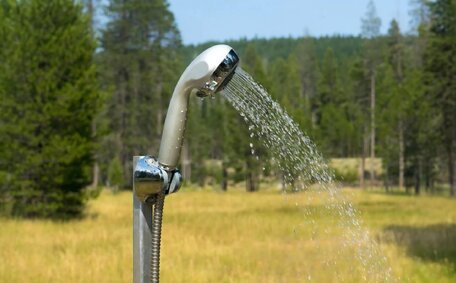Requirements to Obtain a Gas Fitting Permit in Australia
Engaging in gas fitting work in Australia legally necessitates specific qualifications and certifications, followed by obtaining a gas fitting permit or licence. While requirements differ across states, national standards influence property gas criteria uniformly.
- Complete an accredited course that includes critical units for natural gas fitting, aligned with the competency standards of the Australian Gas Safety Framework.
- Apply for a gas work licence or permit through the relevant state or territory authority
- In some states, you may need to pass an additional assessment or exam
- Work under supervision initially before being eligible for an unrestricted licence upon having completed a lower-level qualification
- Renew your licence at regular intervals, focusing on the units that demonstrate compliance with the prevailing gas safety regulations.
A licence allows self-certification of gas work, while a permit mandates oversight by a licensed gas fitter. In Victoria, gas installations over $5,000 require a building permit, and often a Creative Commons Attribution 4.0 International Licence.
Securing a gas fitting permit is essential for plumbers to meet national safety and technical standards for legal servicing of gas appliances and connections.
Scope of Work Allowed Under Different Gas Fitting Licenses
Residential Gas Work
Type gas fitting licences allow the holder to carry out gas fitting work on most residential consumer gas installations like:
- Carry out installation, maintenance, or replacement of gas appliances within existing and new homes, as part of the gas infrastructure.
- Installing and maintaining systems like gas containers for effective gas substitution, particularly those under 100kg.
- Testing and certifying gas safety
Type B gas fitting licences are limited to work on type B appliances, such as cookers, hot water systems, and heaters under the supervision of Type A licence holders in residential environments.
Commercial and Industrial Gas Work
Only experienced gas fitters with unrestricted Type A licences are authorised to perform gas fitting for residential, commercial, and industrial applications, including:
- Install, repair, or modify gas pipes, appliances, and equipment in commercial settings.
- Working on comprehensive industrial gas system projects and bulk LPG installations exceeding 100kg
- Designing, testing, certifying or decommissioning gas systems
- Supervising Type B permit holders
Type B permits limit the scope to residential projects, which means any work in a commercial context is disallowed. Permit holders must operate with the supervision of Type A licence holders, who validate the completed works.
In Victoria, Registered domestic builders in Victoria may connect gas and install appliances in small commercial projects without a gasfitting licence, subject to certain exemptions. Nevertheless, stringent certification and testing protocols are enforced, comparable to the thoroughness required for creative commons licences, like the commons attribution 4.0 International Licence.
Skills, Competencies and Qualifications Needed for Gas Fitting
To practise as a gas fitter in Australia, one must acquire specialised skills, requisite competencies, and qualifications that are in line with the national Certificate III in Gas Fitting standards. This pathway must be completed through determined and successful efforts:
- Completing a lower-level qualification prerequisite - a Certificate III in Gas Fitting apprenticeship over 3-4 years
- Having at least one area of extensive practical knowledge, be it gas safety regulations, appliance installation, fault-finding, testing procedures, and more
- Demonstrating core gasfitting competencies like identifying and managing risks, connecting and testing gas systems, determining gas load requirements, and documenting work
- Holding a restricted gas work licence initially, then progressing to an unrestricted licence once qualified, experienced and assessed as fully competent
- Keep industry knowledge current with continuous training and professional development to maintain valid and up-to-date licensure.
Advancing through the prerequisite course depends on following the Australian Gas Safety Framework, ensuring gas fitters possess the knowledge for safe management, installation, and maintenance of gas infrastructure in various settings.
Overview of Relevant Safety Standards and Regulations
In Australia, gas fitting work adheres to strict Gas Installations Regulations 1999 and safety standards similar to those within mines industry regulation, protecting life and property. The key reference is the Australian Standard AS/NZS 5601, comprising:
- AS/NZS 5601.1: Gas Installations General Installations
- AS/NZS 5601.2: Gas Installations LP Gas installations in caravans, boats, and motor vehicle applications that are not affected by road traffic regulations
These standards detail the technical, operational, performance, and safety criteria for the design, construction, and installation of gas systems and appliances. Regulated key areas encompass:
- Material selection, design, ventilation, and placement of gas piping and appliances
- Leak detection, pressure testing and certification procedures
- Flueing, exhaust and air supply provisions
- Cylinder storage and handling requirements for LP gas
Nationally mandated by laws like the Gas Safety Act and Plumbing Code of Australia, compliance is a vital step towards goals of net zero and renewable energy efficiency. Gas fitters need to be well-versed in AS/NZS 5601 to ensure their work adheres to Australian standards and fosters building energy efficiency, potentially lowering energy bills.
State gas installations regulations, such as Victoria’s Gas Safety (Gas Installation) Regulations 2018, address licencing, exemptions, reporting obligations, penalties for non-compliant installations, and the issuance of a certificate compliance. Gas fitters should know their responsibilities and the certification requirements for their systems, crucial for the application process.
By upholding their legal responsibilities, gas fitters ensure units need enrol complete gas network safety for end users.
Process to Apply for a Gas Fitting Permit
To obtain a gas fitting permit in Australia, with pay units, you need to follow these key steps:
- Students enrolling full-time should be aware of the course requirements and will pay only for the units necessary at a Registered Training Organisation (RTO) for the approved Certificate III in Gas Fitting course. When considering study options and enrolling fulltime basis, this qualification typically takes 3-4 years to complete.
- Complete all essential units and meet the mandated on-job training hours under supervision to demonstrate competency in gas fitting.
- Apply to your local gas regulator in your state or territory for a provisional gas work licence, submitting evidence of your qualifications.
- Once provisionally licensed, you’ll only pay for the units you need to enrol in any required extra prerequisites, like exams, criminal history checks or medical assessments, according to your jurisdiction.
- Start work as an apprentice under direct supervision of a fully licenced gas fitter to log practical experience hours.
- Upon acquiring the required practical experience and completing the essential units, students may apply for an unrestricted gas licence.
- Renew and maintain your gas fitting licence through ongoing consumer building occupational services training and CPD activities every year, lodged before 1 January or as per local requirements.
Research the application process further as the quoted fees are often estimates only, and note that processing times differ from state to state. For detailed information, please refer to the full fee breakdown and state-specific costs on state government websites. You must provide certified proof of qualifications and personal information, ID, and passes in any required assessments when applying.
By securing and consistently renewing the relevant Class I E gas fitting permit, you’ll ensure plumbers gain legal authorisation to conduct gas work across various settings, thus upholding stringent safety and competency standards.
Penalties for Unlicensed or Fraudulent Gasfitting Work
Undertaking gas fitting work without a valid licence or required permit incurs significant penalties throughout Australia, reflecting the serious safety risks associated.
Under state and territory gas safety legislation, maximum fines for unlicensed gas work range from $15,000 to $250,000 for individuals and up to $1.25 million for corporations.
Anyone caught falsifying qualifications or performing work they are not certified for may face prosecution, only pay units need licence disqualification and even imprisonment. For example, in NSW the maximum jail term is 2 years for unauthorised gasfitting under the Gas Supply Act 1996.
Consumers who knowingly contract unqualified gas fitters can also incur large fines up to $120,000 in Queensland and the ACT. This aims to clamp down on ‘black market’ installations threatening public safety.
The permit system enforces robust safety standards by prosecuting fraudulent operators and ensuring all gas fitters possess the necessary technical qualifications.






